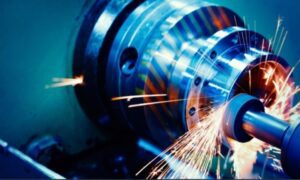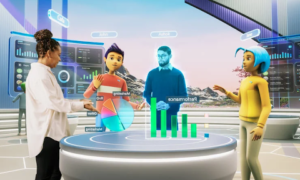As industries face growing complexity and shifting global demands, the backbone of modern operations is being redefined by predictive data systems. From automotive manufacturing floors to multi-site fulfillment hubs, artificial intelligence is enabling businesses to go beyond traditional metrics and helping them forecast needs, adapt in real time, and build operational ecosystems that are as intelligent as they are efficient.
Nowhere is this more visible than in warehouse management and factory intelligence that are increasingly using AI to automate their processes. As organizations embrace digital-first infrastructure, AI is becoming indispensable in transforming static reporting into dynamic, predictive platforms that support resilience and agility at scale.
With over 18 years of experience in enterprise architecture, analytics systems, and large-scale AI software development, technologists like Shrinivas Jagtap have been shaping the shift from reactive monitoring to proactive optimization. Jagtap was recently featured in an article Artificial Intelligence: Its applications and challenges, which highlighted his contributions to developing responsible and adaptive AI platforms. He has long been a champion for applying intelligent data strategy to unlock business value across not just AI but all industries.
The Rise of AI in Fulfillment and Automotive Intelligence
Historically, both fulfillment centers relied on rule-based workflows and siloed dashboards to manage everything from material movement to production throughput. But as volumes grew and variability increased, these systems struggled to scale.
Today, next-generation warehouse management systems (WMS) and automotive intelligence platforms are integrating AI to identify bottlenecks, simulate process alternatives, and enable predictive planning across physical and digital operations.
“Resilience isn’t just about recovering fast, it’s about avoiding disruption in the first place,” says Jagtap. “The goal is not only to report what’s happening, but to anticipate what’s likely to happen, and act accordingly.”
In industries like automotive manufacturing, this translates to forecasting component shortages, adjusting work orders based on machine health data, or simulating production reroutes before disruptions materialize. These capabilities are now essential and not optional.
Building the Architecture for Predictive Reporting
To support these advances, enterprises are investing in scalable platforms that can process real-time data and feed intelligent models. Jagtap’s architectural vision includes:
- Platforms that ingest live operational metrics and apply AI for pattern recognition
- Alert systems that go beyond notifications to trigger corrective logic
- Forecasting models that support workload balancing and throughput optimization
- Infrastructure that supports deployment across multiple sites and environments
“Good architecture doesn’t just deliver speed, it enables learning,” Jagtap explains. “When you build systems that get smarter with time, you gain more than insights. You gain an operational advantage.”
In the automotive world, these platforms can assess production line flow, predict tool wear before quality is impacted, or automatically adjust time based on component availability. In fulfillment, the same principles apply ensuring dynamic resource allocation, real-time error detection, and faster reaction to anomalies.
AI in Automotive Execution and Factory Management
As automotive operations grow more digitized, AI is powering a new wave of transformation across design, assembly, and post-production. Predictive systems now inform everything from simulation-based production planning to real-time feedback loops on factory floors.
Machine learning models track supplier reliability, quality variation, and lead time fluctuations, helping manufacturers anticipate and correct course before issues escalate. Even downstream operations, like logistics coordination or service part routing, benefit from AI-driven adjustments based on demand signals and operational feedback.
Jagtap, also an International Advisory Board Member at ICMR, sees this as part of a larger trend: “We’re moving from systems that mirror the real world to ones that model it, and then act.”
A Future Powered by Self-Learning Systems
The next wave of enterprise platforms, according to Jagtap, will be defined not by how much data they can process, but by how intelligently they respond.
He envisions:
- End-to-end predictive intelligence, from design to delivery
- Embedded AI across WMS and factory systems, enabling autonomous adjustments
- Adaptive dashboards, that recommend, and sometimes execute, corrective actions
- Self-tuning environments, where performance optimization is continuous
With disruptions becoming the norm and customer expectations rising, intelligent infrastructure is no longer a competitive edge, it’s a requirement. And experts like Jagtap, who serves on the International Advisory Committee of the 2024 IEEE Conference on Augmented Reality, Intelligent Systems, and Industrial Automation, bridge architecture, domain expertise, and intelligent systems design, and are in turn helping organizations build platforms that aren’t just efficient, but predictive, resilient, and ready for what’s next.



































